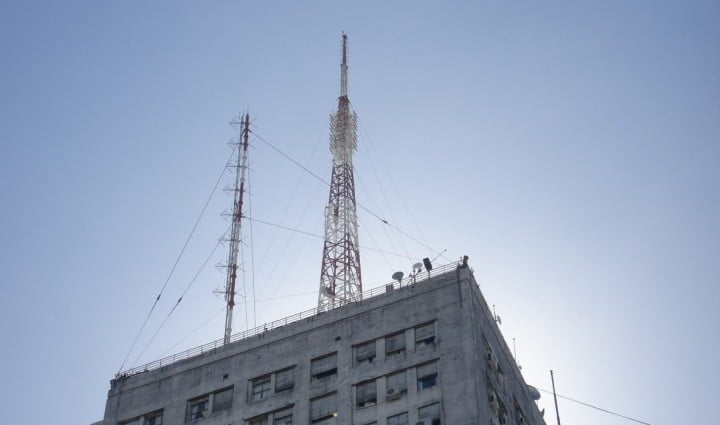The possibility of transmitting data in quantities and speeds never seen before is one of the main advantages offered by 5G networks when they are operational. However, it is not the only thing. This technology promises a major revolution with the Internet of Things, smart cities, fully connected devices and devices. In the United States, operators are progressing gradually, such as the recent launch of 5G in New York and other cities by Verizon. But a different scenario is that of 5G in Latin America, where bureaucratic obstacles and commercial conflicts are delaying its adoption.
One of the biggest problems is that many countries still do not reach an ideal coverage of 4G networks. For example, Argentina currently has a range of 70 percent, although at the end of 2019 it expects to reach 93 percent. In Colombia, meanwhile, 74 percent of the lines are fourth generation.
According to a report by the GSMA Intelligence consultancy, Latin America will only be able to achieve an expansion of 5G networks in 2025, when it could reach a coverage close to 40 percent of the population, with approximately 62 million connections. However, there is optimism. Ignacio Contreras, Marketing Director of Qualcomm, estimates that “although there may be differences with other regions, 5G is being adopted faster than 4G. We see certain conditions that may favor its adoption in Latin America more quickly. ”
Beyond Uruguay, which in April 2019 became the first in the region to have a 5G commercial network, in Digital Trends in Spanish We review what the process is in other countries.
Mexico: 2020

Since 2017, the path for the implementation of the 5G network in Mexico is being prepared, with Telcel tests, the same company that currently offers a network that it calls GigaRed 4.5G. At the beginning of 2019, AT&T was reported to operate a 5G network (in the 3.4 GHz band) for six months in Mexico City. These two companies are the first to offer the service once the network is ready.
One of the most relevant aspects in the development of the 5G network in Mexico is that this is currently the only country that has released the 600 MHz low band spectrum for 5G. According to the Federal Telecommunications Institute (IFT), the propagation characteristics of that band make it easier for more territory to be covered with less radio base.
In terms of infrastructure, the deployment of the new network is based on the reuse of radio bases that are currently used for 4G and that have the ability to migrate to 5G. The IFT also has the necessary adjustments, such as the reorganization of the spectrum and the modifications to the use of frequencies to accommodate the uses of 5G and tender these frequencies. The specific date of the start of the network depends on each of the companies. Telcel, through Daniel Hajj, its CEO, has designated 2020 as the year in which to start this service
Argentina: 2022

Although it was originally estimated that 5G networks will be available in Argentina in 2020, today the most optimistic calculations, both from private companies and from the government itself, speak of the fact that it will only arrive in 2021, although surely in 2022
The process is headed by the regulatory agency National Communications Agency (Enacom), which must make available to 5G at least 20 percent of the mid-band spectrum that was previously destined for the satellite provider ARSAT. The country is also considering releasing or reallocating the mid-band spectra 3,300 to 3,600 MHz, in addition to auctioning the band of 1,427 to 1,517 MHz.
Another of the challenges that Argentina faces is in terms of infrastructure. It may need about 40,000 thousand new antennas, that is, 200 percent more than the current number, to respond to the challenges involved in the arrival of 5G. But it also requires working on the modification of the restrictive local norms associated with eventual health damage caused by this type of facility.
With 70 percent coverage of 4G networks, Argentine companies feel the obligation to work on two fronts: increase the current coverage, but also prepare for the arrival of the new technology. Personal, from Telecom Argentina, has carried out a series of tests based on tennis matches with virtual reality helmets. Movistar, which together with Ericsson was the Argentine company to carry out tests with 5G technology in 2017, today focuses on the expansion of the 4G network. Of course, meanwhile, he has not taken public steps in this area.
Colombia: 2022

Given that one of Colombia's challenges is to consolidate 4G networks, it is one of the countries that is moving more slowly in terms of 5G. The government, through the Ministry of Information Technology and Communications (Mintic), is preparing a plan on 5G bands, which it expects to publish recently in late 2019.
The process has also faced some difficulties. In April 2019, it had called for spectrum auctions, but they are still delayed. As in Argentina, it also has problems with the installation of the necessary antennas to provide better coverage.
The authorities announced that in 2019 pilot tests will be carried out for the implementation of the 5G technology, for which they will invite the operators to submit proposals to decide how they are carried out. In parallel, and with the support of manufacturers such as Nokia, Huawei and Ericsson, the main operators of the country, such as Claro, Tigo and Telefnica Movistar, have carried out different tests.
It is estimated that 5G will be available in Colombia in 2022, but in a massive way only in about five years.
Chile: before 2022
 ABB
ABBThe Chilean government announced in February 2019 a tender for the 5G spectrum, although it was subject to public consultation. Without a confirmed date, it is likely that the start of the auction will be during the fourth quarter of the same year. The authorities have pledged that the technology will be available before 2022.
Although Chile is one of the countries with the greatest progress, the process has been overshadowed by a commercial war between the main operators, after the authority froze part of the middle band (3,500 mhz) for the implementation of 5G. One of these companies, Movistar, took the case to a commercial court.
The authorities also granted permits for experimental tests of the 5G network applied to the industry in 2019. Entel, another of the largest local operators, together with Ericsson and the Swedish-Swiss firm ABB conducted a demonstration in mining operations.
In terms of infrastructure, the country has proposed to double the 14,000 antennas for mobile phone networks and mobile internet. In that sense, the agency in charge of the process has signed agreements with other public entities to facilitate the necessary space, among which are more than 2,000 bus stops.
Editor Recommendations
